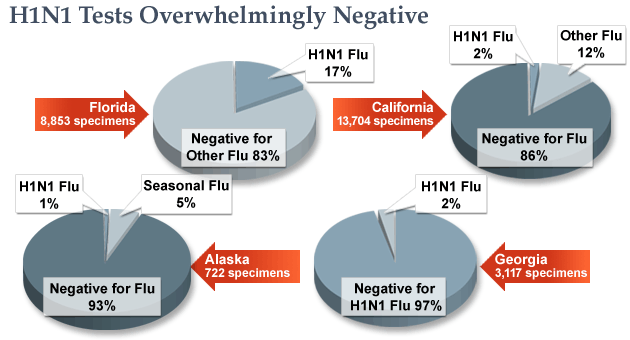A year ago, it looked as if fuel-sipping motorcycles might be the option for motorists facing increasing gas prices. This year, little seems to be working for bike makers.
Sales of motorcycles plummeted 37.3% in the third quarter from the same period a year earlier, with the biggest drops coming in cruisers and sport bikes, two of the industry's biggest product lines, according to the Motorcycle Industry Council. Sales of scooters, which were gaining a year ago, also have fallen sharply.
The council, which doesn't release revenue figures of the mostly privately held member manufacturers, said overall sales of bikes fell to 136,876 in the quarter from 218,242 in the previous year's quarter.
The only bright spot was that sales were dropping at a slower pace: The number of bikes sold in the second quarter fell 53.5% from the same period a year earlier. Historically, the second and third quarters are strongest for the industry because the weather is warm throughout the country and buyers are gearing up to ride.
Industry leaders tried to put a good face on the numbers, saying the sales climate was "challenging" or "tough." But they also called it "painful."
"Every category is down, and it keeps going down," said analyst Don Brown of Irvine. "It's not the old, 'Let's get out there and sell more' that works anymore. . . . People just don't have the money."
Despite a federal stimulus that allows new bike buyers to write off the sales tax, companies are cutting staff and other expenses.
Last week, publicly held Harley-Davidson Inc. reported an 84% drop in quarterly earnings to $26.5 million. The company said it was getting out of the sport bike business, shutting down the longtime Buell line and selling its MV Agusta operation, a high-end Italian brand it bought last year.
Already this year, the Milwaukee manufacturer joined the likes of Honda, Kawasaki, Yamaha, Suzuki and Victory in laying off employees, reducing production and lowering prices to help dealers shrink swollen inventories.
Even high-end motorcycles have been hit. Confederate Motor Co., the Alabama maker of the $92,000 Wraith, expects to sell 30 bikes this year, down from 37 last year, company founder Matt Chambers said.
His affluent clients aren't as affected by the economy, he said, but with the deep recession, "it was very fashionable to
not be buying a high-end luxury product like ours."
Many manufacturers have introduced programs to add value to their products.
Twice in the last year, for instance, Harley-Davidson operated a "ride free" program, which allowed buyers of new Sportsters to get credit for the original retail price of the bikes on trade-ins for more expensive models. Yamaha Motor Co. introduced its Pro Yamaha initiative, directing dealers to be more informed about products and follow up with customers to ensure that they were happy.
Ducati North America, which has seen a 30% quarterly drop in sales, began giving its customers one year of free scheduled maintenance. And Victory Motorcycles, which suffered a 56% decline in sales in the July-to-September period, began offering a five-year warranty to show "significant confidence to buyers," said Mark Blackwell, Victory's vice president.
"We haven't laid everybody off. We haven't totally stopped advertising. We've kept up the product development because we're positioning this business for when the market stabilizes and grows," he said.
Blackwell predicted that the market wouldn't begin to stabilize until at least next spring and that growth wouldn't come until later.
Harley-Davidson and Victory Motorcycles, a division of Polaris in Minnesota, hope to stem U.S. losses, in part, by growing overseas sales. Harley is pursuing emerging markets such as India and China; Victory is going after Europe, where motorcycle sales haven't fallen as much as in the U.S.
For 14 years, through 2006, U.S. motorcycle sales had increased every year. Sales started to drop in 2007, but still topped the 1-million mark.
Last year, as gasoline prices pushed toward $5 per gallon, fuel-efficient two-wheelers got a boost. Despite the worsening economy, street bike sales were down only 3.3% for the year, and scooters had their best year ever, posting a 41.5% gain from the previous year, the Motorcycle Industry Council said.
"Last year, with gas prices, we could sell scooters without a whole lot of work," said Kevin Andrews, Vespa's North American brand manager. "With the economy, we're talking about operational cost."
The cost of owning and operating a car, for instance, is $750 a month, Andrews said, citing American Automobile Assn. data. But owning and operating a scooter costs less than $300. It's a message Vespa is promoting through advertising with its dealers and on its website. Still, scooter sales are down 62% through the first three quarters, but, he said, the declines slowed in August.
"We had a period of constant increases, and I think the industry grew complacent," industry analyst Brown said. "Then the economy hit hard, and it's only gotten worse."
Confederate Motor's Chambers expects his sales to increase next year, thanks in part to a strategy most manufacturers are using: making lower-priced bikes.
Manufacturers also are coming up with ways to help buyers finance purchases.
Since April, Piaggio Group Americas, which sells Vespa scooters, has offered 7.9%, 36-month loans. And Harley-Davidson Financial Services, aided by $300 million in notes placed with Warren Buffet's Berkshire Hathaway Inc. this year and a stronger financial market recently, should support any funding needs throughout 2010, Harley spokesman Bob Klein said.
Most manufacturers, meantime, are scaling back on advertising, and long-standing enthusiast publications are finding the advertising climate "harsh," with revenue down sharply, said Larry Little, senior vice president of Cycle World magazine. "Everybody's fighting for survival up and down the food chain."
Yamaha spokesman Bob Starr said his company had to be "very focused on where, when, how and why we're advertising."
Yamaha experimented this year with low-cost viral marketing on the Internet. This summer the company produced three YouTube videos featuring some of its biggest names in racing. Each of the videos have been viewed more than 100,000 times. Whether they sold any bikes is another issue.
"Did somebody come in to a dealership and say, 'I saw this video . . . and it was so funny I'm going to buy a bike?' It's hard to say," Starr said.
Sport bike sales are down 51% so far this year.
With the riding season over for much of the country, summer 2010 can't come fast enough for the industry.
- Via
LA Times




















![[Most Recent USD from www.kitco.com]](http://www.weblinks247.com/indexes/idx24_usd_en_2.gif)










